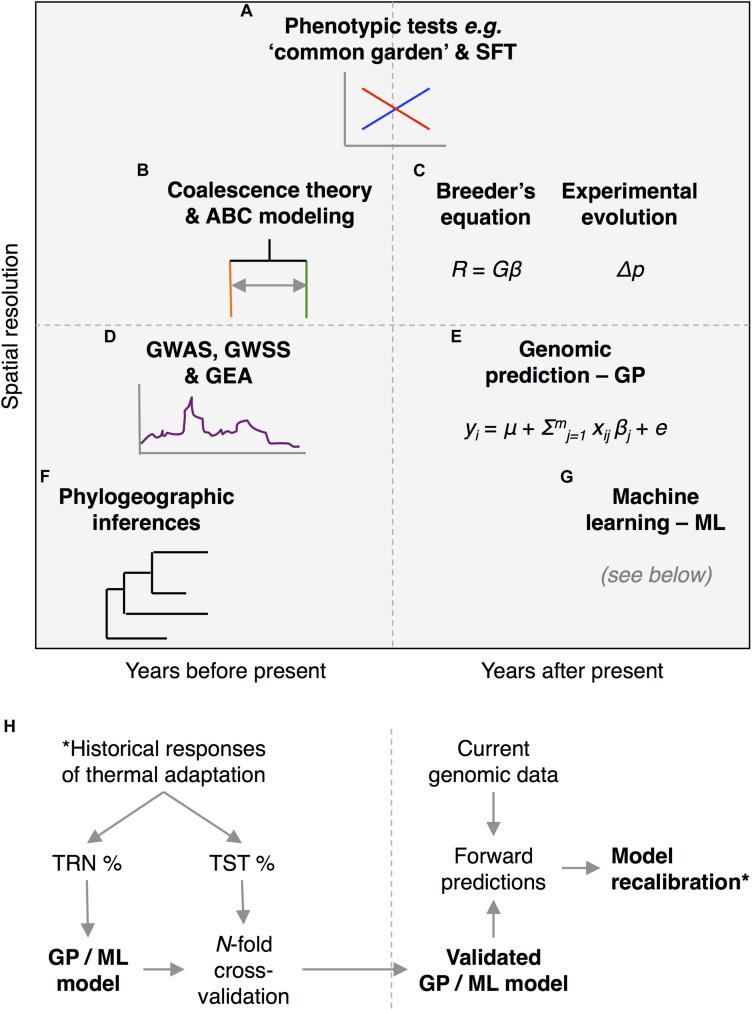FIGURE 1.
Potential approaches to assess populations’ thermal adaptation by looking into their genomic past. Genomic analyses allow reconstructing populations’ adaptive responses to previous events of climate change across various temporal scales (A,B,D,F), as a tool to improve forecasting (C,E,G,H). (A) Empirical approaches such as replicated “common garden” (provenance) tests and space-for-time (SFT) substitution allow studying in situ ongoing genomic thermal adaptation. The inset plot exemplifies a significant genotype-by-environment (GxE) interaction, as can be quantified using reciprocal transplant experiments between habitat types that differ in their thermal stress. (B) Coalescent and approximate Bayesian computation (ABC) analyses help infer recent thermal-driven selective and demographic responses. The inset diagram shows a typical coalescent genealogy depicting divergence with gene flow. (C) The breeder’s equation predicts responses of genetically correlated traits over one generation (vector R) given standardized selection gradients to thermal stress (vector β) by means of the variance–covariance matrix (G) of additive genetic parameter estimates. Alternatively, experimental evolution traces real-time changes in allele frequencies (Δp) across generations. (D) When genomic signatures of thermal selection are under divergent selection after several generations, genome-wide association (GWAS), and selection (GWSS) scans, as well as genome–environment associations (GEA), allow characterizing the genomic architecture of thermal adaptation. The inset Manhattan plot schematizes a hypothetical genomic scan between populations that contrast in their thermal adaptation. (E) Modern high-throughput genotyping may facilitate predictions of the thermal adaptive potential over multiple generations using infinitesimal models under a genomic prediction (GP) framework. (F) Phylogeographic approaches offer an understanding of the genomic consequences of deep-time thermal shifts at an evolutionary time scale. The inset tree represents an imaginary phylogeny. Finally, (G) machine learning (ML) approaches (H) trained using heterogeneous past responses to thermal variation may enhance long-term predictions of the thermal adaptive potential. ML’s modus operandi, as GPs, requires partitioning the calibrating historical dataset between training (TRN) and testing (TST) subsets that are iteratively imputed into a N-fold cross-validation scheme.

